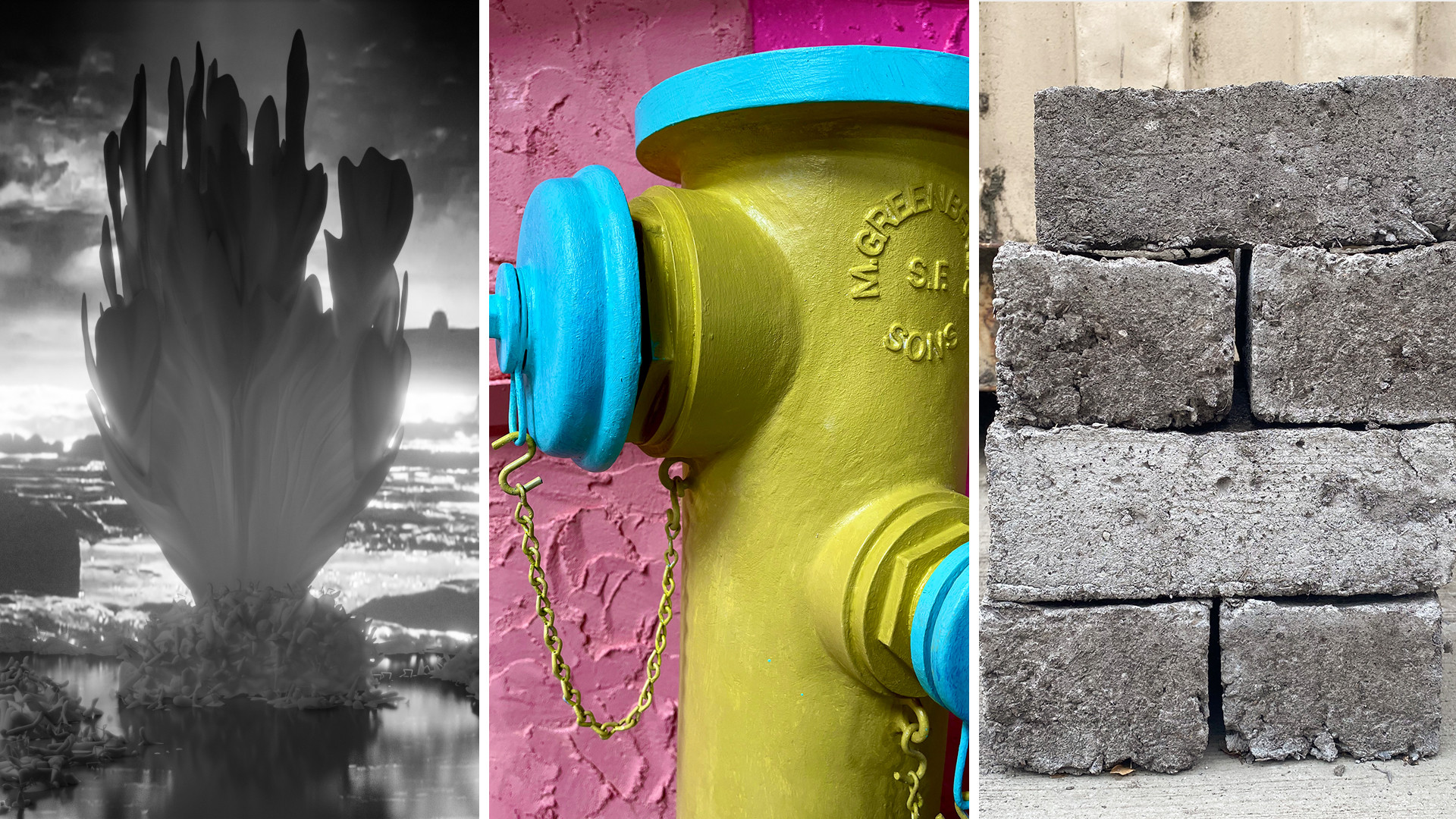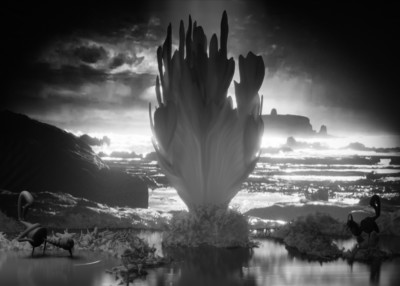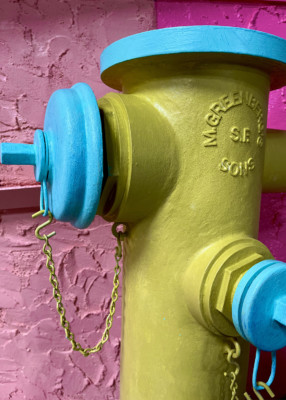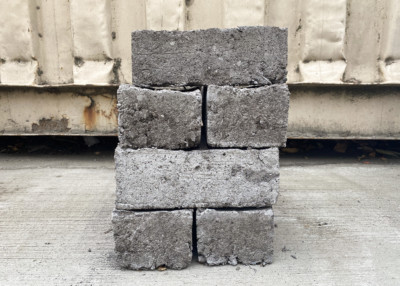
September 27, 2022
FOR IMMEDIATE RELEASE
The Artist in Residence Program at Recology San Francisco is thrilled to announce exhibition dates for current artists-in-residence David Bayus, Malcolm Kenter/Rachel Marino, and student artist Omar Howaida El-Sabrout.
When:
Friday, October 14 from 5-8pm
Saturday, October 15 from 12-3pm
Tuesday, October 18 from 5-7:30pm with artist talk by Omar Howaida El-Sabrout at 6pm (401 Tunnel), Malcolm Kenter and Rachel Marino at 6:30pm (503 Tunnel), and David Bayus at 7pm (503 Tunnel)
Where:
503 Tunnel Ave/401 Tunnel Ave 94134
Admission is free and open to the public, no reservation required. All ages are welcome and the site is wheelchair accessible. Masks will be required at all times for those over 2 years old.

David Bayus
Thank You, Saint Anthony
In his video installation, Bayus creates a theatrical series of beach-side vignettes where life emerges anew from a primordial ocean of synthetic fibers, micro plastics, and lost objects. As evolving biomass encroaches the coastline, a newly formed sentience–sitting in the middle of a new eden–has the privilege to be the first of its kind to get the blues.
As in the artist’s previous exhibitions, the forms created in his virtual environments ultimately make their way into the real world and the viewer is presented with Bayus’s newest sculptural work. Focusing on one single object sourced from the San Francisco waste stream, Bayus explores the anthropomorphic distinctions between a “found” and a “saved” object, between serendipity and salvation, and between evolution and intelligent design.
Written by Danielle Grant.
 Malcolm Kenter & Rachel Marino
Malcolm Kenter & Rachel Marino
City Limit
Drawing equal inspiration from their explorations of the Public Reuse and Recycling Area at Recology and careful observations on their routine commute to the studio, Kenter and Marino call attention to the details at the margins: the trash that has been tossed aside, functional home architecture, and street corner environments. There’s a joy to the heightened remix of elements in the exhibition, celebrating the parts of ordinary life that are too often viewed as disposable or beneath consideration.
Malcolm Kenter and Rachel Marino combine their efforts to create interactive and highly detailed sculptural environments. Marino often gathers inspiration from the easily discarded condiments of American cuisine replicating them on a fantastically large scale. Kenter’s work highlights the oft overlooked aspects of the pre-21st century architectural landscape. Through these different concepts, both artists have developed an intimate connection to the ideas of excess and how people perceive surplus in America. They have exhibited together at the Spring/Break Art Fair in New York and Guerrero Gallery in San Francisco.
Written by Weston Teruya.
 Student Artist
Student Artist
Omar Howaida El-Sabrout
in heaven
she won’t have pain
she won’t have anything
Creating tamy’ mud-bricks from compost and recovered clay, Stanford graduate Omar Howaida El-Sabrout constructs large sculptural forms reflecting cultural knowledge and a familial agricultural lineage passed down through oral storytelling across continents and generations, from Egypt to San Francisco, from grandfather and granduncle to El-Sabrout. The process of adapting these building techniques, similar to adobe brick construction, to the specific context of materials found at Recology offers a lens on how tradition and spiritual practice can be sustained and transformed in diaspora–and to some degree, what might be lost as elders pass on.
At the center of in heaven // she won’t have pain // she won’t have anything is a large tamy’ brick structure that anchors the exhibition. The cave-like piece references both a mihrab–the wall niche in a mosque which faces Mecca (and from San Francisco, the approximate direction of Egypt and El-Sabrout’s family)–and Egyptian dovecotes–earthen towers with openings and embedded sticks that house hundreds of pigeons, a ubiquitous architectural feature in some regions of the country. For El-Sabrout, the structure proposes a kind of sanctuary for immigrants and those far from home, a protected space that looks toward distant family, built using the knowledge inherited from those relationships.
The other two pieces in the exhibition, a painting that El-Sabrout created on the surface of a found canvas and a coffin constructed from tamy’ bricks, acknowledge the passage of life, the ephemerality of these artistic works, and the emergence of something new from what came before. The painting depicts a baby-figure with a skull head, sitting next to a sand castle about to be washed away by a large wave. Bits of the original, discarded painting found by El-Sabrout peek out at the edges of the image. The coffin form, filled with fragments of broken glass and pottery, suggests a sense of loss, but frames it in this earthen vessel, made of fecund compost and soil. In an exhibition inspired by knowledge passed down from elders, the pieces simultaneously mourn the inability to capture all of the wisdom held by previous generations, while celebrating the possibilities for the future. The installation also includes chairs strategically arranged in the gallery which the artist offers with the hope that visitors sit, contemplate the work, and possibly share their own stories of what they have learned from previous generations.
Omar Howaida El-Sabrout is an artist, writer, and musician who graduated from Stanford University in June with a degree in Comparative Literature. They play with dirt & fermentation to make work about memory, identity, cultural heritage, community, brownness, queerness, and the like. This is Omar’s premiere exhibition outside of school.
Written by Weston Teruya.
About the Recology Artist in Residence Program
The Recology San Francisco Artist in Residence (AIR) Program is an art and education initiative that awards Bay Area artists access to discarded materials, an unrestricted stipend, and an individual studio space. These resources, along with comprehensive support, are provided to artists while they create a body of work and host studio visits during their four-month residency at the San Francisco Transfer Station.
Since 1990, over 150 professional artists and 50 student artists from local universities and colleges have completed residencies. Selected artists have worked across disciplines—including new media, video, painting, photography, performance, sculpture, and installation—to explore a wide range of topics.
The Recology AIR Program encourages the conservation of natural resources by providing artists with time, space, and reusable resources to create a new and impactful body of work. The Program further aims to create a more diverse and inclusive residency that amplifies perspectives from Bay Area communities and inspires children and adults who engage with the program to re-imagine their role in creating a just and sustainable world.
Contact:
art@recology.com
####